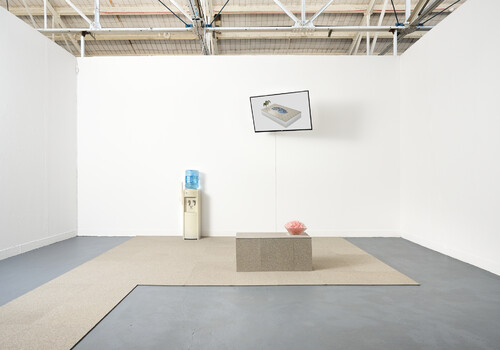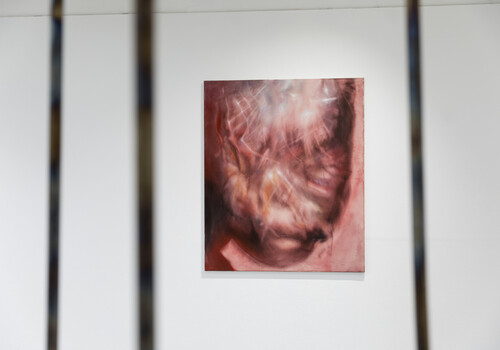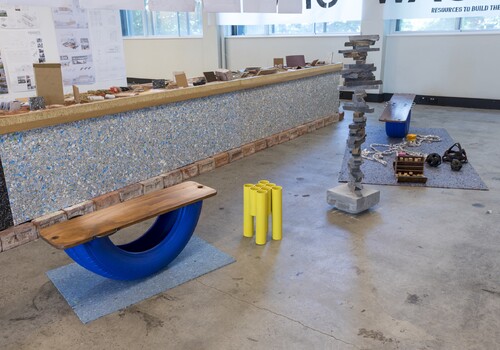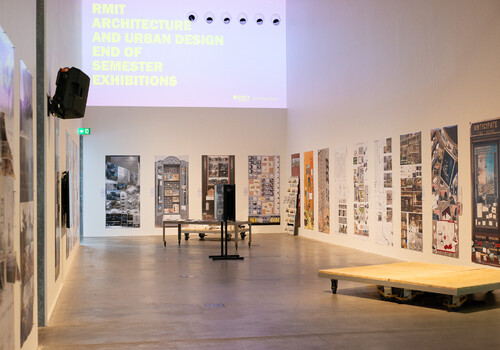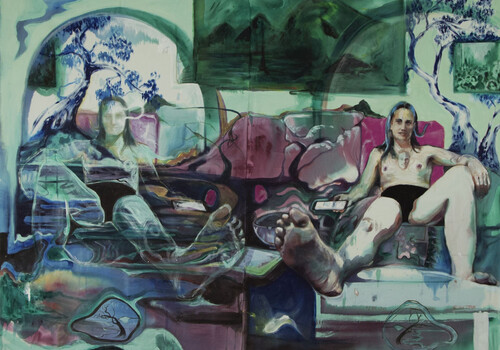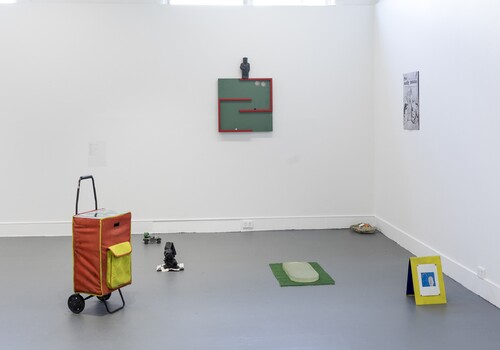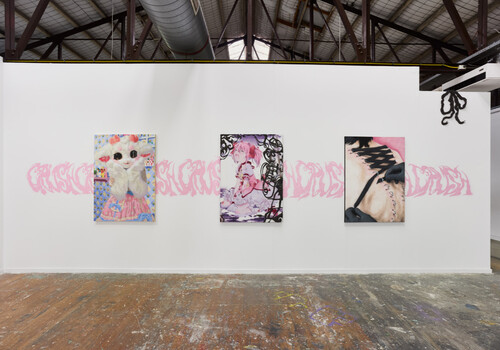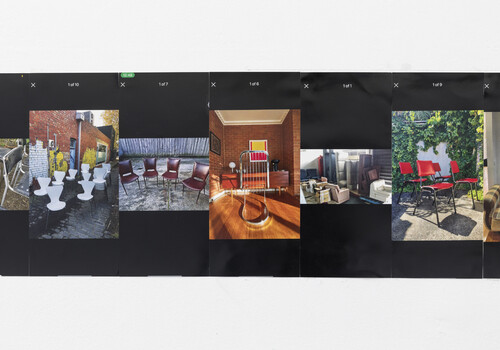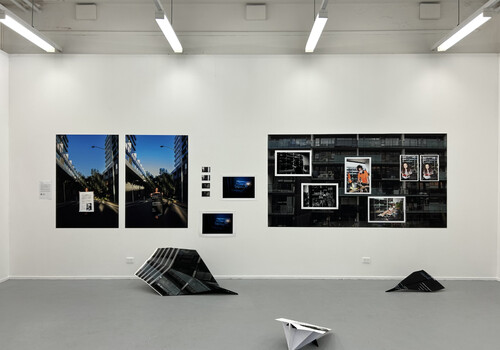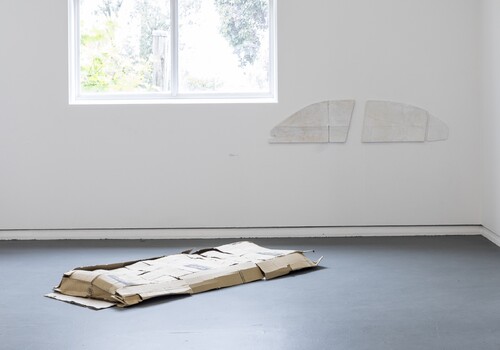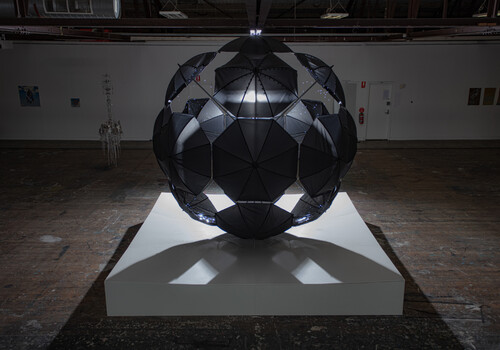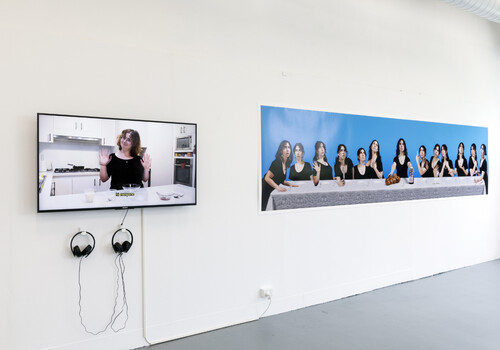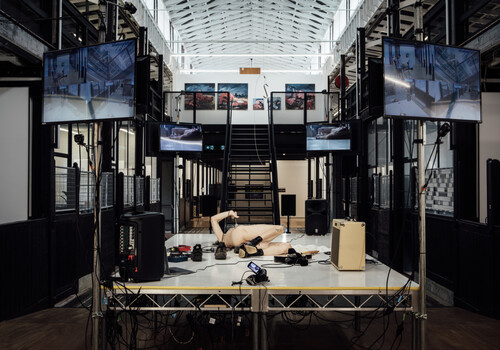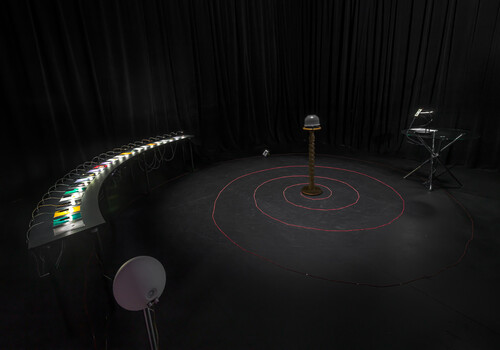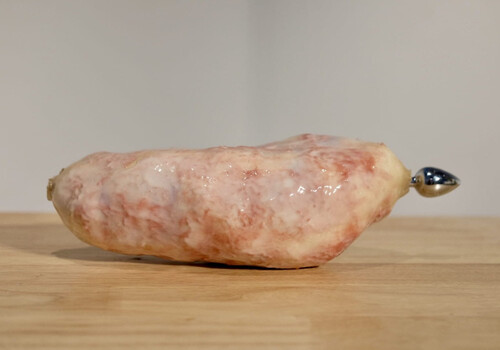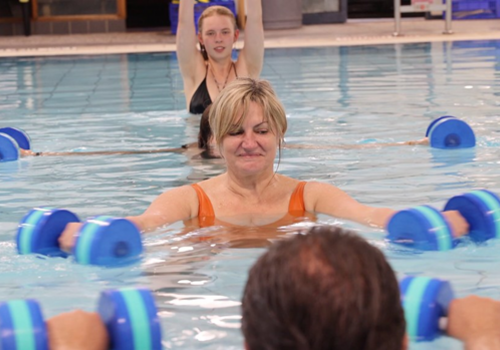Bachelor of Fine Art, MADA
By Lucy Taylor Schmitzer
You don’t often get to kick things in galleries. Through their focus on action, two artists in the third year Bachelor of Fine Art section of MADA Now–Brayden Dopper and Jessica Tanto–trace corrosive human touch in their practices.

Dopper’s Contact Series is sequestered in a back corner. Stepping into the small room, rendered gym-like by protective flooring, reveals three interactive objects made from denim jeans: a punching bag, a bolster pillow, and a football. These jean-objects (jobjects, if you will) through their form and material both evidence and invite the impact of human touch. Faded sections worn away by contact with human bodies are now re-purposed. In their new forms, the football asks to be kicked, the punching bag asks to be punched (I had a crack at the former). The cushion offers a chance to rest–when I visited, someone was using it to lounge on the floor.
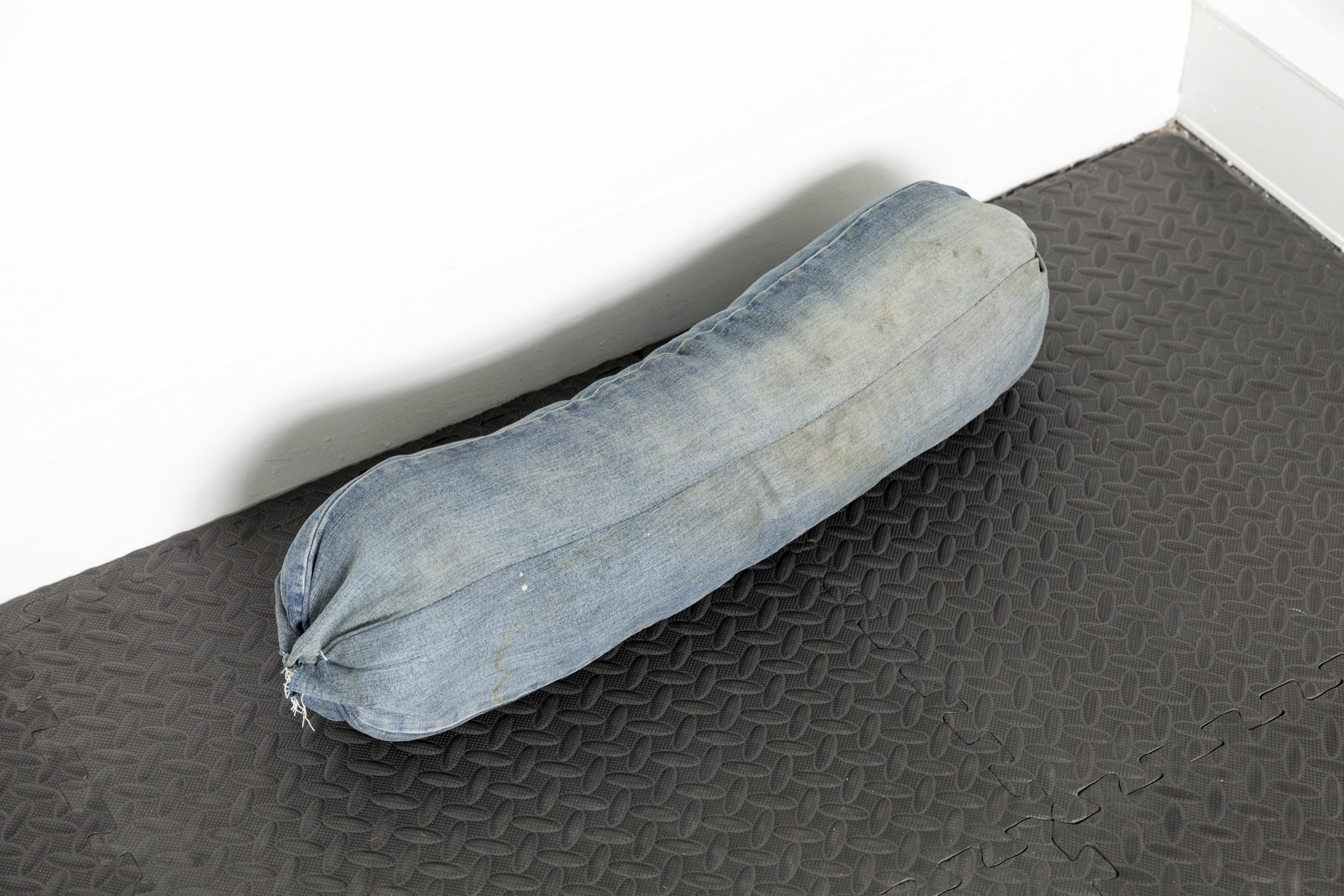
This rebirth continues the degradation of their condition: the seams sport loose threads, the cushion and football are stained by dirt from the floor. The wear on the denim simultaneously alludes to tactile interactions with the objects both past and future; they will continue to develop traces of our contact with them. The life and afterlife of human touch envelopes Dopper’s Contact Series.
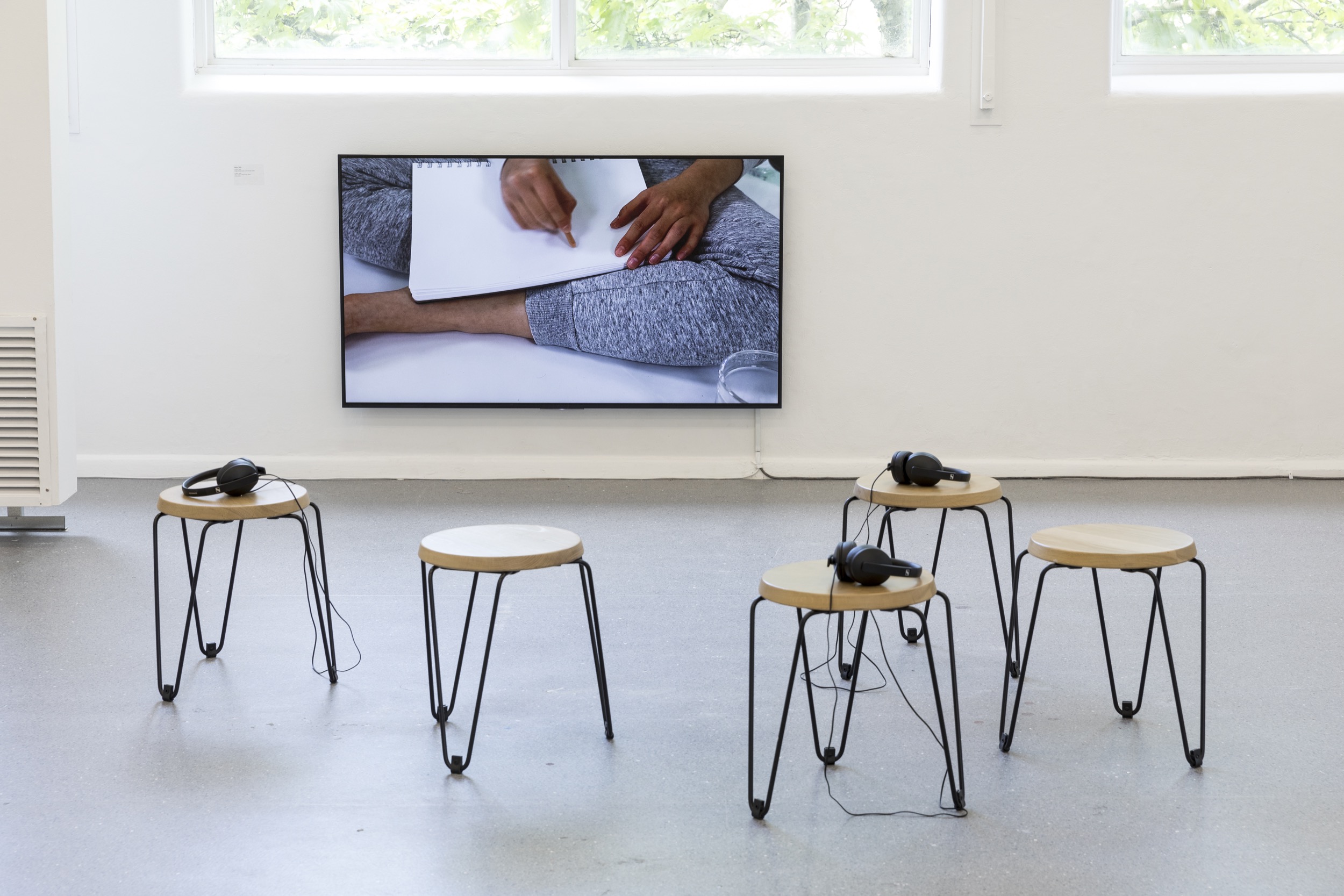
Opposing the material immediacy of Contact Series, Tanto’s Untitled omits its tactile art object–instead, their body of work becomes the artist’s body at work. A screen low to the ground captures Tanto sitting cross-legged, scribbling with white pencil onto the white page of a typical spiral-bound sketch book. White on white, the lines themselves are not visible (this work did, admittedly, remind me of the polar bear in the snowstorm joke), but the erosion of the pencil and the brief cut to sharpenings collected in a jar emphasises that lines are being made. The disjointed audio of Tanto’s scribbling, including hints of them tearing paper, breathing, and sharpening stresses this point. Between the disembodied sounds, their pencil becoming blunt, and the collected pencil shavings, this work privileges the use of materials. Tanto eschews a final work to instead accumulate signifiers of “drawing”.
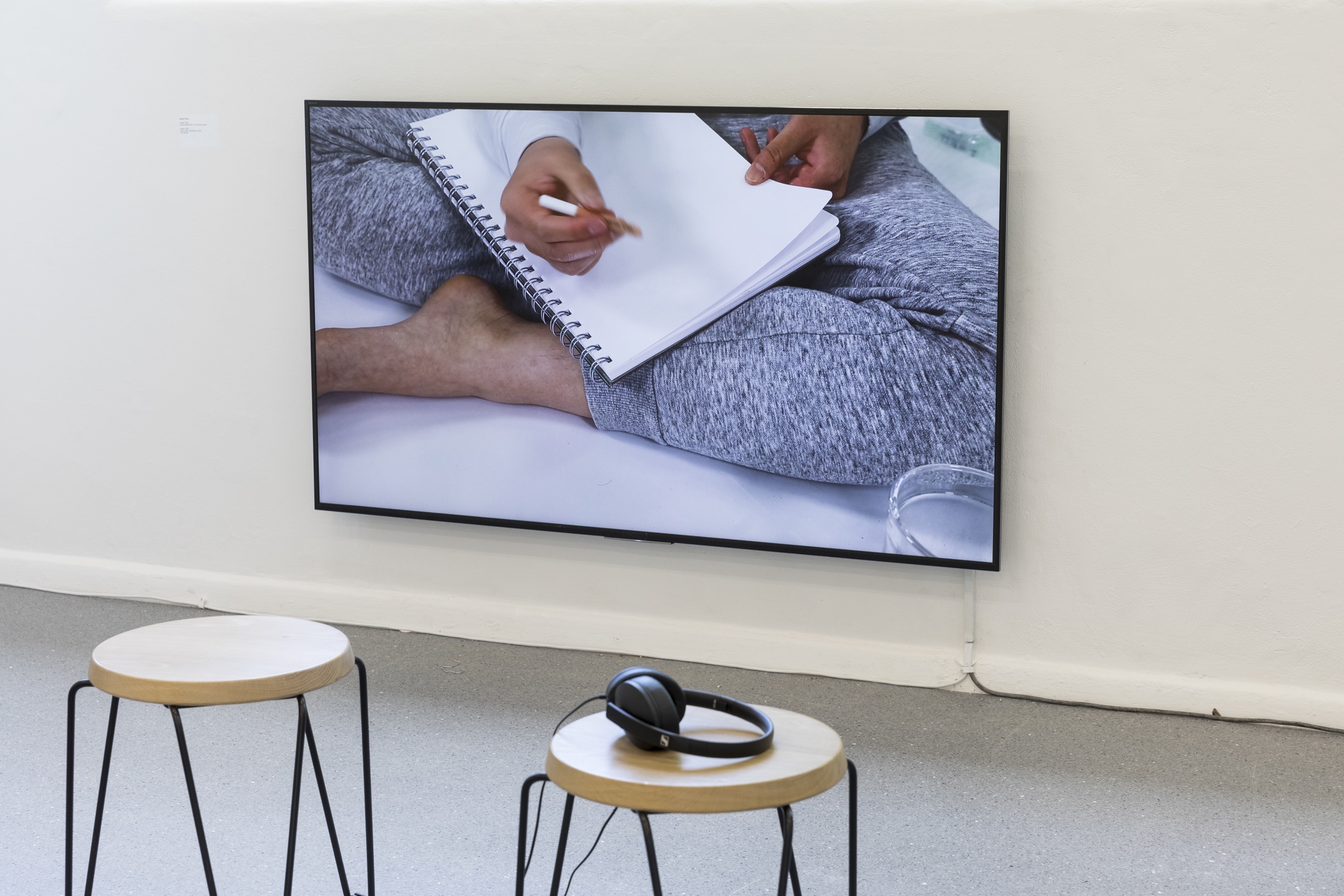
With the sounds of Tanto scribbling in my ear, I look further afield to the other works in the space. In the same way that Dopper illuminates the wear resulting from human interaction, Tanto seems to emphasise the invisible human hands that created the objects surrounding me. This visualisation of contact–of action, of use–marks both artists’ work. Tanto and Dopper insist on rendering visible what is, ultimately, worn away. Human touch is entangled as a means of both creation and consumption. It’s a fun thought to kick around.
Lucy Taylor Schmitzer is a writer and arts worker based in Naarm/Melbourne. Her research interests include performance art and contemporary Australian photography.
